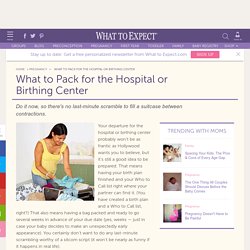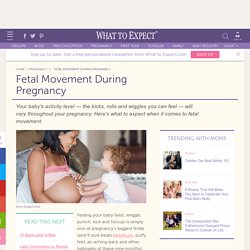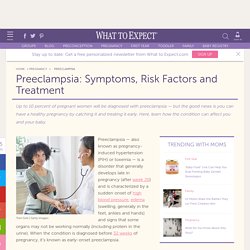

Pregnancy Week by Week. Pregnancy Week by Week. Pregnancy Week by Week. Heartburn During Pregnancy. Feeling the burn, baby?

No one — not even a regular at the corner greasy spoon — does heartburn like a pregnant woman (except, of course, a pregnant woman who's a regular at the corner greasy spoon). You're likely feeling the unpleasant sensations you'd expect if you had a flamethrower stationed in your chest or gut — including burning and discomfort from mouth to stomach to bowel. And you're not alone: Nearly half of expectant moms have also been feeling your pain — probably for most of their pregnancies.
What Causes Heartburn During Pregnancy? Thanks to all the hormones circulating through your body during pregnancy, the muscle at the top of your stomach — the one that usually prevents digestive acids from splashing into the esophagus — relaxes (like all those other muscles in your digestive tract — and everywhere else in your body). What You Need to Know The chances of having a completely heartburn-free pregnancy are slim to none. Third Trimester of Pregnancy. It may feel as if there's no way your belly can get any bigger, but there's no doubt about it — it will get bigger over the course of the third trimester of pregnancy.

A lot bigger. Here’s what to expect from your body and your rapidly-maturing baby in these final few weeks. When Does the Third Trimester Start? The third trimester begins in week 28 of pregnancy and lasts until you give birth, which may be around week 40 of pregnancy. It’s likely, however, that labor will start a couple of weeks earlier or later — in fact, at least 50 percent of all babies are latecomers.
In the meantime, hang in there! Cesarean Section (C-Section) Delivery. If you’re a mom-to-be with your heart set on a vaginal delivery, the news that your baby needs (or may need) to be delivered by cesarean section might feel disappointing.

Visions of pushing baby out the way you’ve maybe always dreamed can sometimes be suddenly displaced by worries about the surgery, about being stuck in the hospital longer, and about the tougher recovery (not to mention the scar). But currently in the United States, about 33 percent of babies are delivered by cesarean — which means, all things being equal, you have about a one in three chance of having to go the C-section route.
What to Expect During a C-Section While it’s true that any surgery can seem like a frightening proposition that should be taken seriously, with some mental and emotional preparation you can feel empowered if a C-section seems in the cards. Read More: Reasons for a Scheduled C-Section Your doctor may peg you for the procedure in advance of your due date. Certain medical conditions. Pregnancy Week by Week. Nesting Instinct During Pregnancy. Mother hamsters do it.

Mama cats and dogs do it. Expectant birds do it. And, if you’re like many human moms-to-be (and some dads, too!) , you’re doing it as well, these days: preparing your "nest" for your soon-to-arrive baby. Though it’s fortunately not manifested in the same behaviors (you’re more likely to recycle that pile of newspapers than shred them or reach for the feather duster rather than the feathers), the nesting instinct in humans can be as powerful as it is for our animal friends. If the nesting instinct hits your nest right as you're preparing for childbirth, make the most of it — now, before life becomes too hectic and before finding a moment to shower (and rinse thoroughly) will be challenging enough.
Fetal Hair, Skin and Nails. In the weeks after conception, your baby starts out as an embryo made up of three distinct germ layers: the endoderm, mesoderm and ectoderm, all of which form at just 3 weeks gestation.

It’s in the last of these “derms” — the ectoderm — where the vast majority of skin, hair and nails develop. What to Pack for the Hospital or Birthing Center. Home > Pregnancy > What to Pack for the Hospital or Birthing Center Do it now, so there's no last-minute scramble to fill a suitcase between contractions.

Your departure for the hospital or birthing center probably won't be as frantic as Hollywood wants you to believe, but it's still a good idea to be prepared. That means having your birth plan finished and your Who to Call list right where your partner can find it. (You have created a birth plan and a Who to Call list, right?) That also means having a bag packed and ready to go several weeks in advance of your due date (yes, weeks — just in case your baby decides to make an unexpectedly early appearance). A Dad's Guide to Pregnancy: Month 7. "Hey in There!

" As your partner's pregnant belly grows, your baby is growing like gangbusters — all systems are go, fat is being deposited under the skin, giving your baby those pinchable cheeks (both kinds), and your baby's eyes are opened. What's more, he or she can very likely hear you now — how cool is that? Put your mouth near your pregnant partner's beautiful round belly and start talking.
Gestational Diabetes (GDM) During Pregnancy. Has your doctor diagnosed you with gestational diabetes (GDM)?

While the diagnosis might feel overwhelming at first, it turns out this pregnancy complication is much more common than you might think — and the number of cases is growing. Know that with careful monitoring and treatment, it can be managed and you can have a safe and healthy pregnancy. GDM usually starts between week 24 and week 28 of pregnancy when the body does not produce enough insulin (the hormone that helps convert sugar into energy) to deal with the increased glucose, or sugar, that’s circulating in your blood to help your baby grow. One of the most common pregnancy complications, gestational diabetes affects one in 10 expectant women — and because it occurs more often among obese women, rates of GDM in the United States have been rising along with obesity rates. Pregnancy Week by Week. Fetal Movement During Pregnancy.
Read This Next Feeling your baby twist, wriggle, punch, kick and hiccup is simply one of pregnancy's biggest thrills (and it sure beats heartburn, puffy feet, an aching back and other hallmarks of these nine months).

There may be no better proof that a brand-new — and impressively energetic — life is developing within you. But fetal movement during pregnancy can also drive a mom-to-be batty with questions and doubts: Is my baby kicking enough? Too much? Does my baby have four legs (because it sure feels that way when the kicking starts)? Preeclampsia. Preeclampsia — also known as pregnancy-induced hypertension (PIH) or toxemia — is a disorder that generally develops late in pregnancy (after week 20) and is characterized by a sudden onset of high blood pressure, edema (swelling, generally in the feet, ankles and hands) and signs that some organs may not be working normally (including protein in the urine).

When the condition is diagnosed before 32 weeks of pregnancy, it’s known as early-onset preeclampsia. An estimated 5 to 10 percent of pregnant women are diagnosed with preeclampsia — though half of those cases are among those who had high blood pressure prior to pregnancy. While most cases resolve without issues, if left untreated it can be dangerous for both mom and baby. Unmanaged preeclampsia can prevent a developing fetus from getting enough blood and oxygen, damage a mother's liver and kidneys, and, in rare cases, progress to eclampsia, a much more serious condition involving seizures. The causes behind preeclampsia. Diarrhea During Pregnancy. While lots of women complain about being stopped up during pregnancy, the opposite can happen too – though not as often, and it generally doesn't last as long.
Fetal Development: Baby Digestive System. What goes in must come out. Although they’re not always fun (or fragrant) to clean up, those full diapers are one of the best signs that baby’s digestive system is doing its job, and all your efforts to feed that tiny mouth are paying off. And that process starts long before you even give birth. Here’s how it all goes down (so to speak).
Gaining Too Much Weight During Pregnancy. If you realize that you’ve indulged a little too much during pregnancy, don’t panic: Lots of women have that “oops” moment — when they step on the scale at the end of their first trimester and discover they’ve gained a dozen pounds instead of the three to four pounds of recommended pregnancy weight gain. Sometimes it’s because they’ve taken “eating for two” just a tad too literally, relishing sweet release from a lifetime of dieting. Sometimes it’s because they’ve found comfort from queasiness can come in high-calorie packages (ice cream, burgers or bread by the loaf). Whatever your reason for packing on a few too many pounds, all is not lost. Your Baby's Amazing Placenta. While your baby grows and matures over nine months of pregnancy, there’s something else growing in your uterus too — and it’s responsible for keeping your baby alive. You’ve likely already heard of the placenta, but what does it do? And what do you need to know about it to have a healthy pregnancy?
So what is the placenta? The placenta is the lifeline between your baby (or babies!) And your own blood supply. Fetal Development: Baby's Bones. It might be hard to believe when you’re being jabbed from the inside by a pointy elbow or when a pointy little bottom is pushing on your bladder, but your baby’s bones don’t just grow in fully-developed. They are very much formed by what both of you eat. The skeletal structure that will one day support your baby’s whole body starts out as flexible cartilage that gradually ossifies (or becomes hard bone) as your little one absorbs more calcium from you during your pregnancy — and then from the foods he eats well beyond (try 20 years beyond).
When to Call the Doctor During Pregnancy. As early on in your pregnancy as possible, it’s a good idea to set up a protocol for emergencies with your practitioner. Video: Your Pregnancy Week 20. Fetal Brain and Nervous System. Nutrients That Make a Baby. With all those cells and no little cell phone in there to place a take-out order, your baby's relying on you to deliver all the vitamins, minerals, and calories he or she needs to grow and develop. Pregnancy Week by Week. Pregnancy Week by Week. Pregnancy Week by Week. Managing Your Weight Gain With Multiples.
Pregnancy Week by Week. Pregnancy Week by Week. Chloasma (Mask of Pregnancy) If you’ve noticed dark, blotchy, brown, confetti-like patches of skin on your forehead, upper lip, and cheeks, you’ve got chloasma — what’s often called the “mask of pregnancy.” But you’re not alone — this condition affects 50 to 75 percent of expectant mothers. Pregnancy Week by Week. Fetal Movement During Pregnancy. Feeling your baby twist, wriggle, punch, kick, and hiccup is simply one of pregnancy's biggest thrills (and it sure beats heartburn, puffy feet, an aching back, and some of the other hallmarks of these nine months).
Skin Tags During Pregnancy. If you've noticed any small, soft, flesh-colored growths pop up since your belly popped out, they’re most likely skin tags. These excess skin growths usually appear on skin surfaces that are hot, moist or frequently rubbed, including the folds of your neck, armpits, torso, beneath your breasts or in the genitals. The (only) good news: They’re completely benign. What causes them. 1 and 2 Weeks Pregnant - Week by Week Pregnancy Calendar.